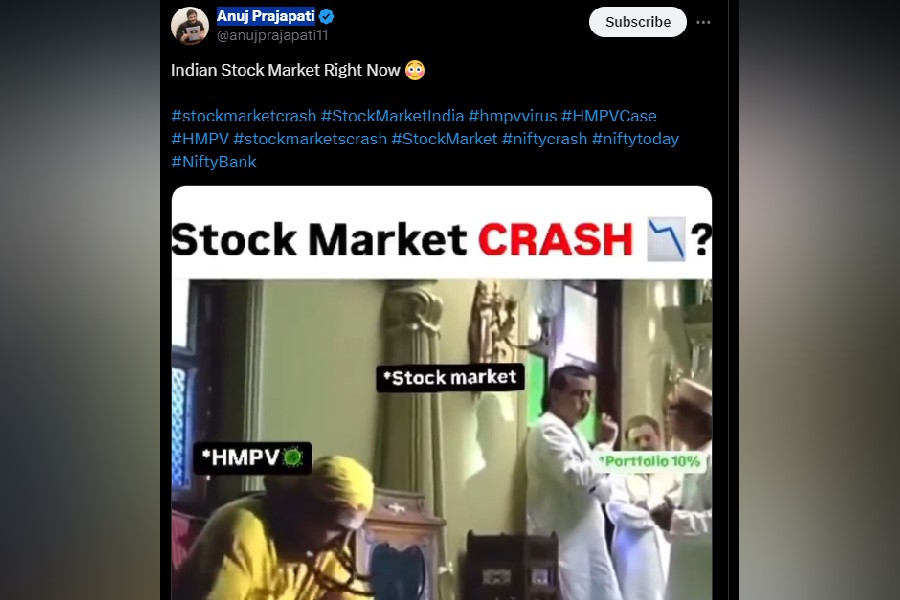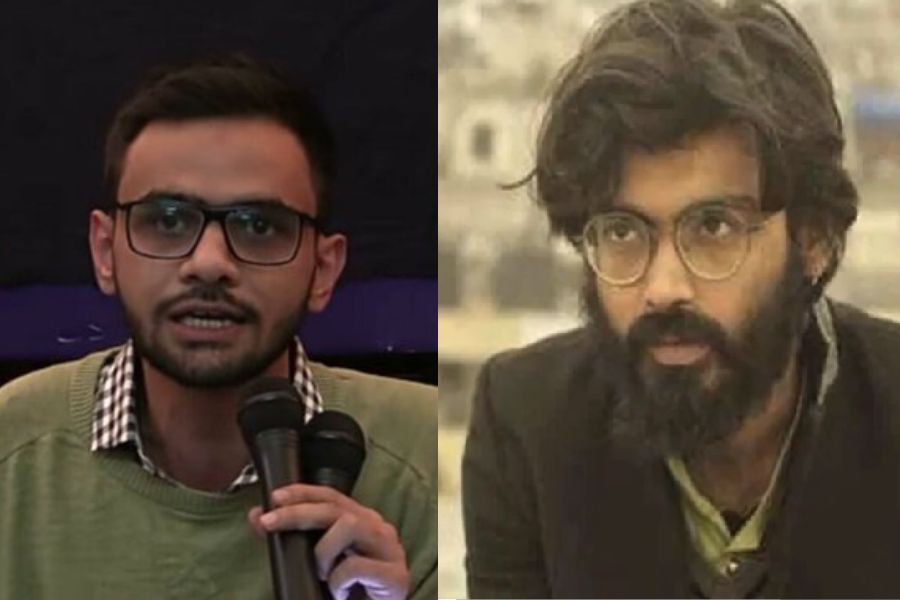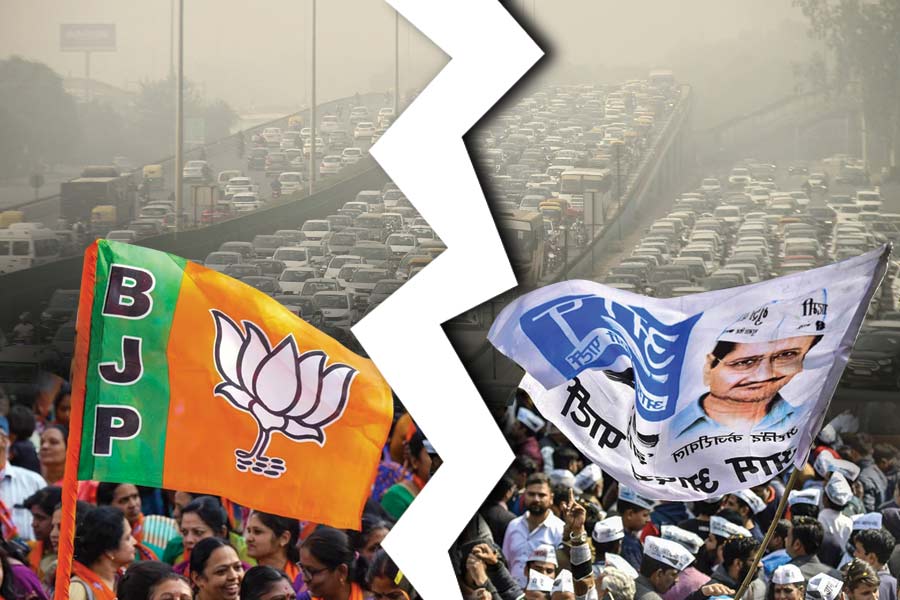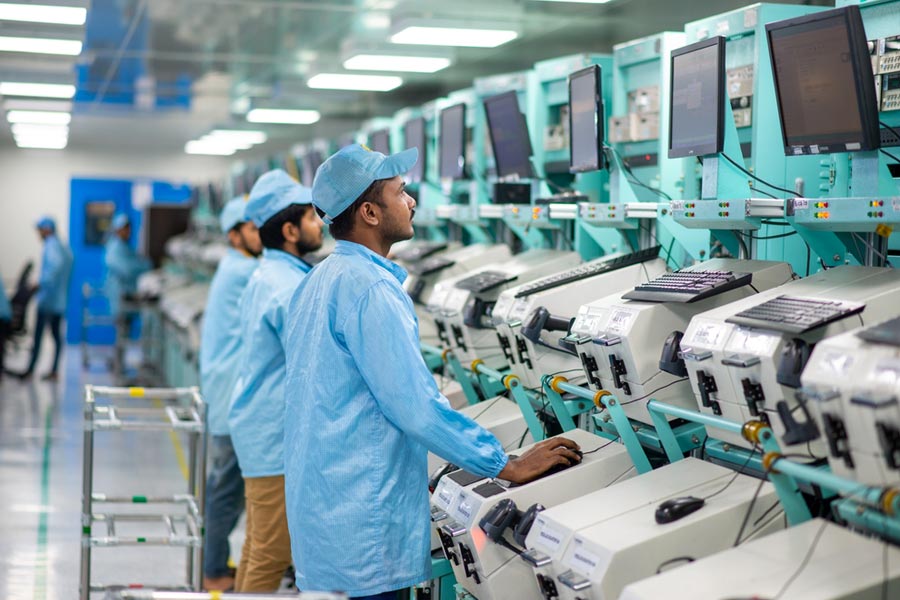Those who fret that community pujas in Calcutta are getting highly politicized must remember that they had been started in 1910 to support a political ideology. The first community Durga Puja at Balaram Basu Ghat Road in the Baghbazar area coincided with the Calcutta session of the Indian National Congress. Bal Gangadhar Tilak had led the way by organizing large-scale Ganpati Pujas in Maharashtra to attract the masses to the new creed of nationalism. Calcutta adopted this model of utilizing festivities for a political purpose.
But the whole exercise has undergone a paradigm shift. The phenomenon of organizing public celebrations has been extended to many more deities. Ganesh and even Hanuman have come in from outside to jostle with subaltern deities like Sitala, Shashthi, Manasa and even Dharmaraj and Boro Thakur for attention. These pujas are more than mere occasions for re-affirming piety or for indulging in carnivals. An academic examination reveals that such a puja actually represents pulsating expressions of political power, which is strengthened by interlinked cultural participation. Religion offers legitimacy and social festivals facilitate the penetration and domination of the 'spaces' - physical, visual, aural and celebratory - that communities cherish.
Community pujas are thus essential for the sustenance of the new political structure that seized power from an apparently invincible apparatus that ruled Bengal for 34 years. This became possible because the ruling party has come up with an answer to the 'cadre base' that was patronized by the Left. The communist parties had left a big gap by staying away from the Durga Puja; the current ruling party has filled that void. This has helped it create an army of supporters with local clubs serving as the hub of such support. My study of a slum in South Calcutta shows that many more gods and goddesses have been inducted in the annual schedule of para pujas. The newer additions are essential to maintain the fluid balance of power within the structure: the much sought-after tasks of collecting revenue and deciding how to spend it has been apportioned among rival groups in the 'republic of the para'. They, in turn, bonded with voters by providing them mandatory entertainment.
Several evenings during pujas are thus dedicated to public performances by notable singers or actors. In fact, the entertainment is spread over days in such a manner that people from other localities can partake of the glitz. The rising decibel levels during evenings or even during the rest of the day needs to be accepted as the vigorous assertion of subaltern power over the less-numerous gentry residing in the same area or in adjacent localities. The fact that every municipal ward has its own slums ensures the success of this political model, even though it would be an oversimplification to equate political bases with income-based 'urban spaces'. The greater frequency of festivals is also essential to ensure the regular nourishment of the cadre as well as the operations that are carried out by councillors or other elected representatives and their cohorts. The presence of senior political leaders seals the bond and some VIPs are known to 'inaugurate' puja venues over several days to reinforce the power nodes within the structure.
But care is also taken by the powers that be to ensure that this phenomenon is not viewed as the celebration of one religion only. The festivals of other communities are given considerable encouragement to balance secular credentials. Incidentally, this has led to the present regime being criticized by an opposing party for its alleged pandering to a particular vote bank.
A vital component of the larger exercise is the 'joy factor'. For instance, the bright strings of tiny coloured lights, which used to bring cheer during the Pujas only, have been given permanent residence so that the city bears the stamp of never-ending festivities. This is further substantiated by public-oriented events, ranging from the Indian Premier League and the U-17 World Cup to musical jamborees and film festivals. All stops are pulled out to ensure that there is some extravaganza on round the year. The frequent pujas we have discussed are critical constituents of this overarching master plan of happiness, especially for the bottom half of the pyramid. This also provides perfectly valid reasons for the vast publicity machinery of the government to splurge on one leader to the point that none else is visible.
But then, who pays for the festivities that are not part of government events? Models differ, from self-financing through a daily toll collected from street markets, shopkeepers and hawkers to undisguised extortions. The rehearsals for the latter began long ago, during the previous regime, when trucks and cars used to be stopped on highways for 'contributions' to pujas. The police looked the other way. This trait is now stronger with pujas and power intertwined. 'Syndicates' determine how much money is to be paid by each builder or enterprise.
The mass appeal of large congregations during Durga Puja attracts companies and advertisers as well. But our focus is on politics, not economics. It is time we realize that populism and post-democracies depend on their own innovations. After all, politics is as much about the art of seizing power as the craft of retaining it.











